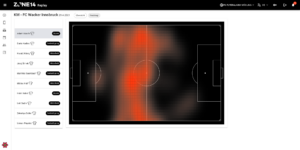
Technique in football is an art that goes far beyond the purely athletic. It is a demonstration of a player's agility, creativity and ability to control the ball with precision. It's not just about running with the ball, but controlling it and using it as an extension of your own abilities. In this article, we dive deep into the intricacies of technique and dribbling, discovering the importance of the different aspects and offering effective drills to perfect these skills.
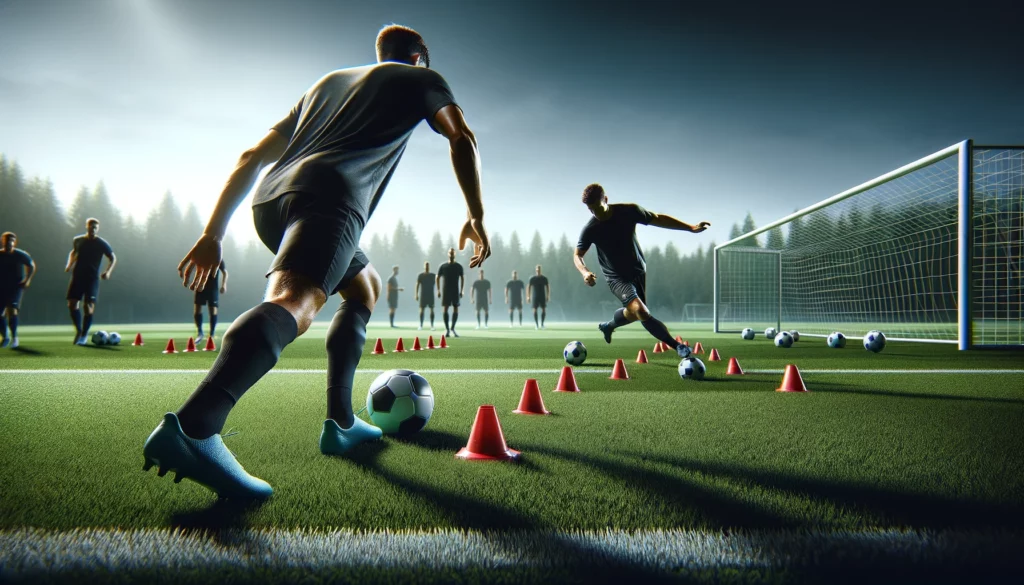
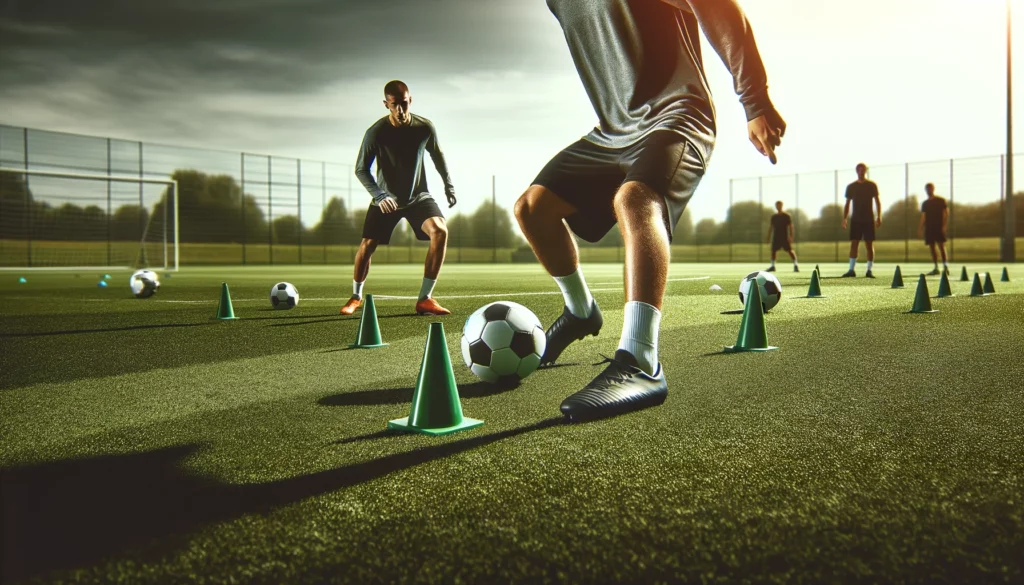
Dribbling is a skill in football that has a decisive influence on passing and shots on goal. A good dribbling technique enables players to manoeuvre successfully through tight defensive lines and thus create space for precise passes or shots on goal. Dribbling not only strengthens individual ball control, but also promotes tactical understanding of game situations.
A player who is technically strong can draw defenders towards him and thus open up spaces for his team-mates. Skilful dribbling allows players to get into optimal positions to play precise passes. The combination of dribbling and passing makes it possible to move the ball safely through your own ranks while maintaining the initiative in attack. For additional inspiration, you can read our article on 3 top passing drills as well.
Dribbling is also of central importance when shooting at goal. A player who dribbles skilfully through the opposition's defence can not only create his own goal-scoring opportunities, but also serve teammates in promising positions. Dribbling makes it possible to penetrate the penalty area and create effective shots on goal in dangerous areas. What is important in drills for shooting in football?We have already clarified this in a previous article.
The importance of dribbling for passing and scoring lies in the ability to create space, overcome defenders and create dynamic attacking opportunities. Players who perfect their dribbling technique not only become an individual threat to the opposing defence, but also key players in creating scoring opportunities for their team. Targeted technique training is therefore an important component for success in modern football.
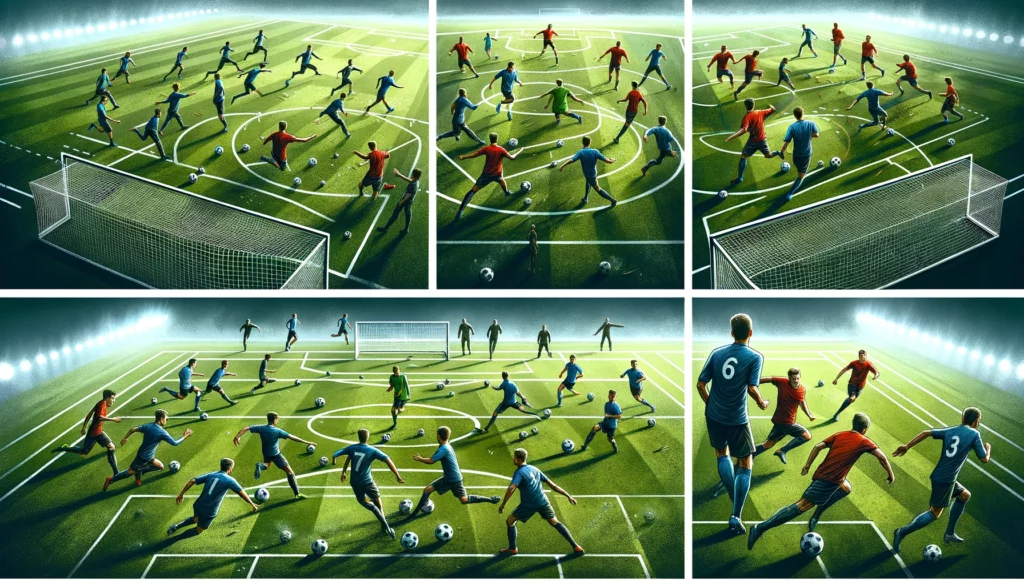
1. Dribbling through slalom poles:
- Place several slalom poles in a row with sufficient space between them.
- The player dribbles the ball through the slalom poles by making tight turns and changing direction.
- Concentrate on ball control and the ability to dribble the ball under pressure.
2. Short pass triangular game:
- Mark a triangle on the playing field with cones.
- Three players are located at the corners of the triangle.
- The players pass the ball quickly and precisely between themselves by moving and changing positions.
- The aim is to play the ball quickly and improve ball control.
3. One-on-one dribbling:
- Divide the players into pairs and mark out a limited area.
- Each pair tries to dribble the ball away from each other while remaining in a confined space.
- The focus is on protecting the ball, keeping it under control and at the same time trying to overcome the opponent.
4. Technical course:
- Set up various stations on the course, e.g. cones, tyres or slalom poles.
- The player runs through the course and performs a specific technique at each station, e.g. dribbling, passing, receiving the ball or shooting.
- The focus is on executing the techniques with accuracy and speed.
5. Pass-and-sprint exercise:
- Mark two targets on the course, one as a starting point and the other about 20-30 metres away.
- The player passes the ball to his partner and then sprints quickly to the goal to get the ball back.
- This exercise aims to improve the accuracy of passes and develop the player's ability to move quickly from passing to sprinting.
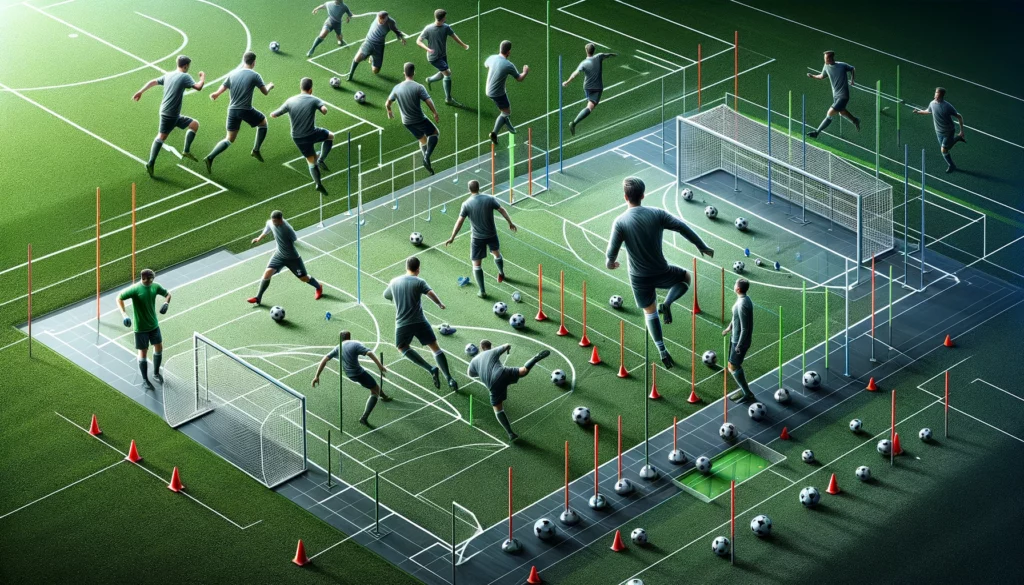
Die Videoanalyse spielt eine entscheidende Rolle bei der Verbesserung von Technikübungen im Fußball, um die Fähigkeiten der Spieler zu verfeinern. Durch die Aufzeichnung und Analyse von Sequenzen können Trainer und Spieler wertvolle Einblicke in ihre Leistung gewinnen und gezielt an Schwächen arbeiten. Hier sind einige Gründe, warum die Videoanalyse für Technikübungen von großer Bedeutung ist:
By integrating video analysis into technique training, coaches and players can work more specifically on the further development of technique and create a sound basis for individual improvements. The visual feedback from videos helps to deepen the understanding of one's own game and thus maximise the effectiveness of dribbling drills in football. We at zone14 have set ourselves the goal of making video analysis possible for every club, and it doesn't matter whether you train an U-8 or the club team.
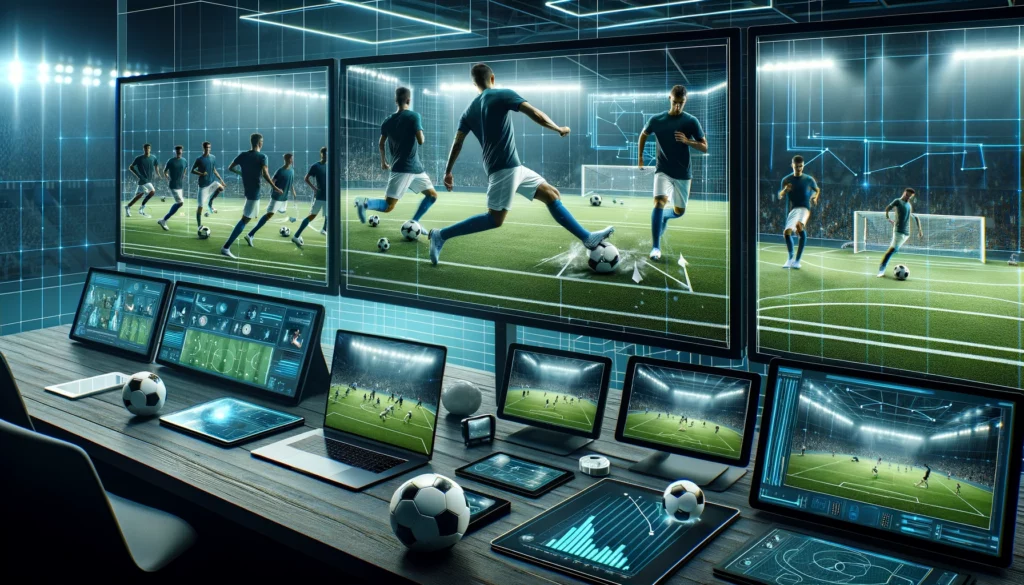
In football, the path to mastering technique and dribbling is a continuous process of refinement and development. The combination of ball control, ball proximity, change of pace and strategic moves results in a dynamic player who is able to influence the game in different situations. Through dedicated training and targeted drills, players can improve their dribbling skills and unlock new dimensions to their overall performance on the pitch. The football world awaits your skills on the pitch.